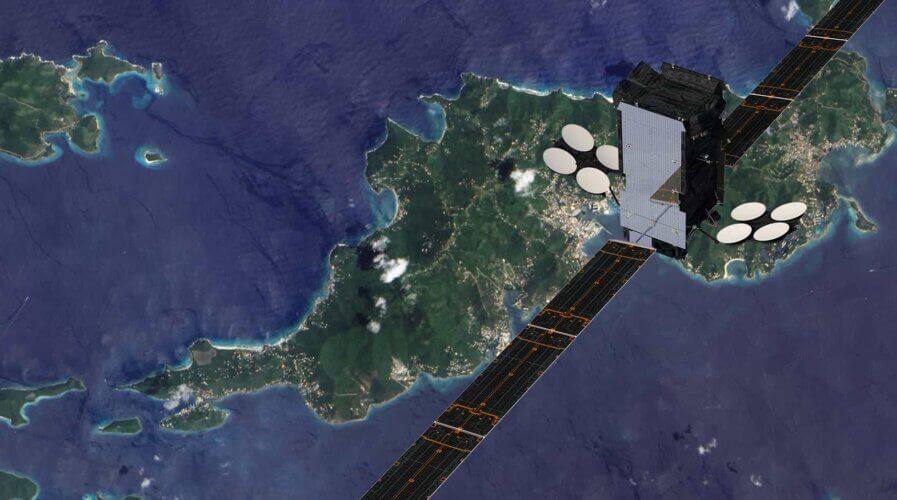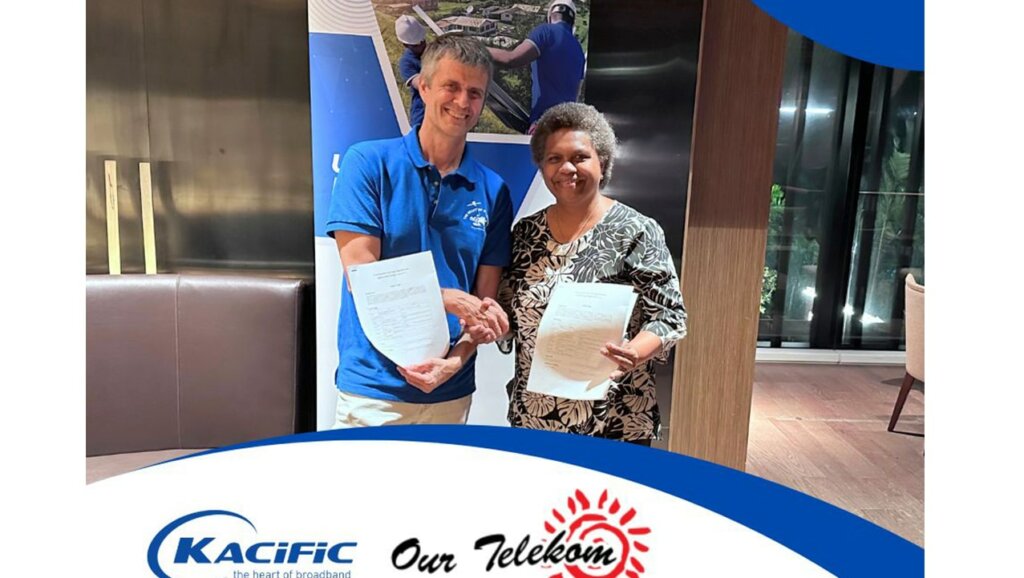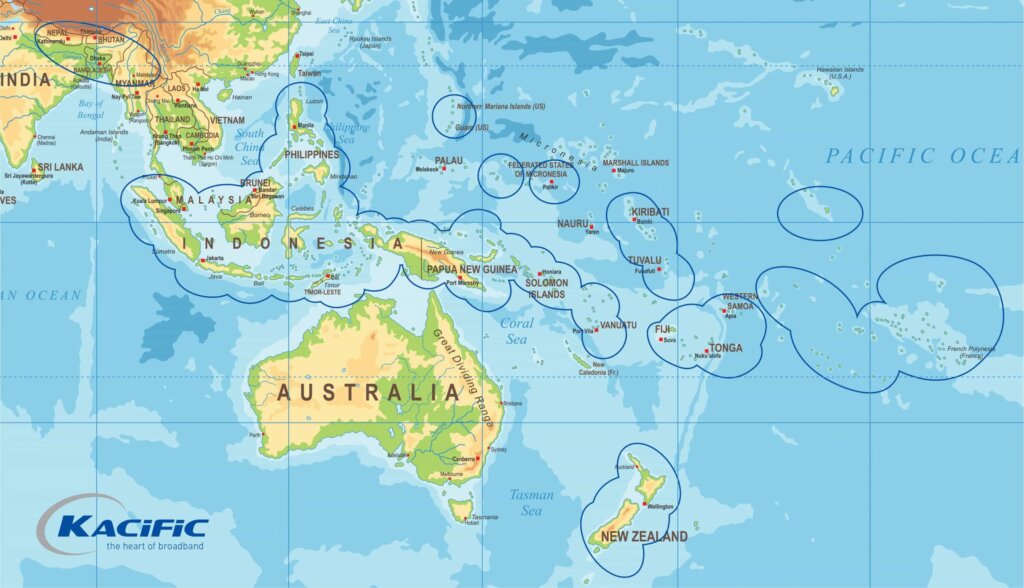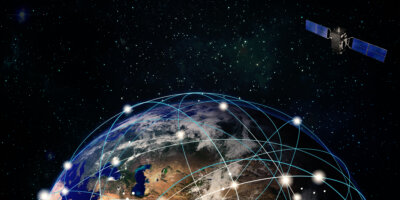
The Kacific1 satellite helps improve the communications network in Southeast Asia and the Pacific Islands. (Source – Kacific)
How satellites can improve the emergency communications network
|
Getting your Trinity Audio player ready... |
The Boxing Day tsunami in December 2004 saw over a quarter of a million people lose their lives. To this day, many feel that the heavy loss of lives could have been avoided if there was a proper communications network and early warning system in place. In fact, by the time the tsunami hit Sri Lanka, India and the coasts of Somalia some several thousand miles away, several hours had gone by since the earthquake first occurred.
For Christian Patouraux, founder and CEO of Kacific Broadband Satellites Group, experiencing the disaster firsthand meant he was compelled to ensure that communications networks would remain available in times of crisis. Patouraux was in Thailand during the Boxing Day tsunami and witnessed how survivors struggled to communicate with their loved ones back home because most of the telecommunications infrastructure was damaged.
Fast forward to today, Patouraux is now hoping his satellites are able to provide the vital connectivity needed in the region. With a focus on Southeast Asia and the Pacific, Kacific is a next-generation broadband satellite operator. The company provides universal, fast and high-quality broadband access at an affordable cost to countries that are remotely located or do not have access to basic internet connectivity. The service is provided via the Kacifc1 satellite, which was launched in 2019.
“When I was in Thailand, there was actually a lot of wealth in the countryside. In fact, the countryside is the economic engine of the developing world. Bangkok manages the growth of the country but it does not create it. In the same way, as Jakarta manages growth, the wealth is actually created in the countryside.
You can’t connect the countryside with fiber. It’s just too disseminated. You’d have to the fiber connection in small offices with four or five people. So satellite is the obvious answer but it can’t just be not any satellite. It has to be a broadband satellite. A broadband satellite is designed and looks like a cellular network from space. It has all these little beams of connectivity, that carpets the map because you’re not trying to do a broadcast. Instead. you’re trying to do a unicast. You’re trying to communicate one on one with many different views. With a broadband satellite, you need to do a frequency reuse of your spectrum, over and over again, just like a cellular network. And so that’s what we did with Kacific,” said Patouraux.
Recently, Kacific helped restore communications to the Solomon Islands after its connectivity was damaged. The nation’s domestic undersea submarine cable links were damaged when a vessel dropped its anchor on it. Several provinces had their communications network disrupted.
Kacific was able to deliver additional temporary satellite capacity to enable broadband, mobile and landline services for a significant portion of the country within two days of the incident. Kacific swiftly set up the necessary infrastructure and provided the island nation with a digital lifeline through a short-term satellite connectivity solution of 600Mbps on its Kacific1 satellite. Kacific’s solution demonstrated how satellite communication offers a reliable backup alternative when fiber optic cables are damaged or unavailable, ensuring continuity of service accessibility, speed, and affordability.

Kacific reinforced its established partnership with Solomon Telekom Company Limited by swiftly restoring connectivity to STCL’s affected customers after damage to the nation’s domestic undersea submarine cable links operated by the Solomon Islands Submarine Cable Company.
The satellite journey
While the entire process sounds straightforward, Patouraux said the journey was a challenging one. Having started the company in 2013, it took them quite some time to raise the funds needed to get the satellite and send it to space.
For Patouraux, countries in the Pacific Islands proved to be a good place to start. Simply because it’s mostly seen as a tourist destination and would be a good place for a startup. The company went it and managed to sign its first contract with Tuvalu Telecom followed by a second contract with Kiribati Telecom.
“After this, we raise more money on the back of these few contracts, and we ventured into more countries. And I remember that in Indonesia, we were signing contracts ahead of time. We hadn’t really had a satellite, but we said we have a good idea. If we put the satellite in space, we’ll connect all the countryside, and we will decrease the pricing of bandwidth by a factor of 10 in the countryside. Following that, things snowballed and we managed to raise US$230 million. We designed and blueprinted a broadband satellite and worked with Boeing. After that, we launched the satellite via a Space X rocket and started the service in 2020,” explained Patouraux.
Patouraux also highlighted that Kacific currently has about 12,000 customers. These customers include schools and hospitals with about 50 end users in each location. Patouraux estimates that they currently connect about 600,000 people with their satellite and the number will continue to grow.

Coverage of Kacific1 (Source – Kacific)
When disaster strikes, satellites come to the rescue
Satellite communications play a crucial role in providing reliable and effective communication not just in rural and remote areas but can also be a lifesaver for communications during natural disasters. Here are some ways satellite communications can help:
- Backup Communication Infrastructure: When terrestrial communication networks such as landlines and cellular towers are damaged or destroyed by natural disasters, satellite communication systems act as a backup infrastructure. Satellites can quickly restore connectivity and enable vital communication for emergency responders, relief organizations, and affected communities as well as facilitate coordination and information exchange between different response teams and government agencies.
- Rapid Deployment: Satellites can be deployed quickly to provide communication coverage in affected areas. They are not limited by physical infrastructure requirements and can cover large geographic areas, including remote and hard-to-reach locations, where setting up ground-based communication infrastructure may take a significant amount of time. For example, a helicopter can easily drop off a satellite transmitter in a disaster area which can be used to solve connectivity problems. Satellite phones and terminals can also be quickly deployed to affected areas, allowing survivors to communicate with their loved ones, request help, or report their status.
- Real-time Data and Imagery: Satellites equipped with remote sensing capabilities can provide real-time data and imagery of affected areas. This information is crucial for disaster assessment, damage estimation, and identifying areas in need of immediate assistance. It helps emergency responders make informed decisions and prioritize their efforts. It can also help monitor and track the movement of storms, hurricanes, and other natural disasters in real time. This information allows authorities to issue early warnings and evacuation notices, improving preparedness and potentially saving lives.
“Most countries that experience natural disasters like a tropical cyclone are victims of global warming. They are in an area that has extremely precarious environments. We had to design a system that can use bandwidth in an area that has been flattened by a cyclone. We need to have a system that was robust enough to bring with a boat or with a helicopter to drop on-site with the disaster response team and provide, within a few minutes, a robust internet service that can be backhauled to the headquarters to provide situational awareness, coordination of assistance and such. And this is where we designed the CommsBox,” mentioned Patouraux.
“The Kacific CommsBox is an emergency communication product that can be instantly activated to establish connectivity. This box can be stored at remote sites or even airdropped into the emergency zones. The satellite dish inside connects to our powerful satellite, which offers widespread coverage including islands, mountainous regions and other remote areas.”
“It is not only a self-installing system, but it also has a battery pack, a tablet, Wi-Fi capabilities, and it has massive solar panels that can sustain it. Even in case of a cyclone where there is heavy rain, it will continue charging its batteries and the battery themselves can live without sunlight in the dark for three days. It’s a very robust military-grade system. And we started selling those to National Disaster Management Office in Fiji, for instance. We have also sold it to defense ministries to governments that want to place these systems in different vaults, in preparation for a disaster,” added Patouraux.

A Tweet highlighting Kacific’s success in the region.
Leading the satellite communications network
Patouraux acknowledged that there are now more players in this area, especially with many realizing the potential returns the industry offers. Currently, Starlink, Intelsat, and SES are just some of the satellite companies that offer similar use cases in the region. While each of them has its own unique offering, Patouraux believes Kacific still has better value for customers, especially in the way they manage the business.
“We deal with competition by focusing on all segments and also in some broadband, rural areas, and enterprises. We don’t do a lot of residential and enterprise-focused. We provide a service and an SLA to these companies that have activities in the countryside. Competition like Starlink, they’re very focused on residential. Their business model is built around management from the US with some resellers, but very limited. And it’s very much based on credit card payments. And in the developing world, we hardly have any credit cards, it’s really a cash economy. We work with local distributors and local resellers. We also sell plans rather than bandwidth. We have today about 400 distributors inside the district,” Patouraux emphasized.
Moving forward, Patouraux mentions plans for another satellite. What he truly envisions is an era of software-defined satellites, which he feels will erode pricing further.
“I imagine that over the next 10 years, the prices will be divided by half or probably maybe more than that, compared to what you have today, because of technology. It is also because the internet is becoming richer. As an operator, you absolutely need to erode your price. You need to provide the same price. So we need to be conscious of that,” he concluded.
READ MORE
- Safer Automation: How Sophic and Firmus Succeeded in Malaysia with MDEC’s Support
- Privilege granted, not gained: Intelligent authorization for enhanced infrastructure productivity
- Low-Code produces the Proof-of-Possibilities
- New Wearables Enable Staff to Work Faster and Safer
- Experts weigh in on Oracle’s departure from adland


